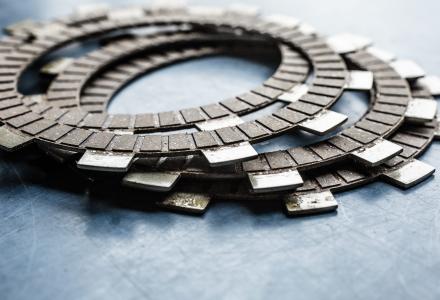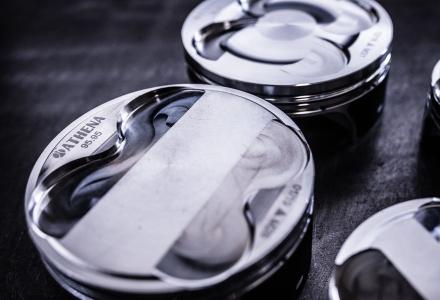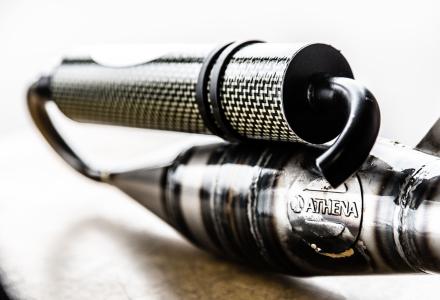Spring is coming, are you ready to get back on your bike?
Spring is the perfect time to awaken your motorcycle from its winter hibernation and prepare for long and thrilling adventures on the road. After the winter slumber, it's essential to perform a detailed check of the motorcycle to ensure the best performance and maximum reliability.
First and foremost, it's necessary to subject the motorcycle to a complete check-up to address any small issues that may arise during the winter months when the bike is idle.
The extended period of inactivity can affect the motorcycle's performance, so it's important to perform some simple checks to restore performance to the highest level and safely get back on the road.
In this article, we'll provide you with a detailed checklist for performing routine maintenance on your motorcycle after winter.
General Inspection
The first step is a thorough inspection. Start by moving your motorcycle outdoors to expose it to sunlight, allowing for a detailed assessment. Look for visible damage such as scratches, dents, or broken parts, ensure that cables and wiring are intact and functional.
Carefully check for any leaks of fluids such as engine oil, brake oil, coolant, fuel visible through liquid drops and/or halos present in the winter storage area.
Loss of coolant and/or fuel may leave a green/blue or pink stain when dry. Using a flashlight, check for leaks from the engine and ensure that everything is dry to the touch.

Battery: the heart of your motorcycle
During winter, the battery may be particularly affected by inactivity, but if it has been connected to a charger, there should be no issues. However, if it has been inactive for months, it may have lost its charge. In that case, follow these steps: first, remove the battery and recharge it using a charger. If it doesn't recharge, it may be time to replace it with a new one.
Once charged, reposition it in its housing and check the voltage with a tester. Ensure that the electrical contacts are in good condition, as condensation may have caused oxidation during periods of inactivity.
Finally, before the next winter arrives, it is advisable to equip yourself with a charger with charge maintenance functions to preserve the battery life during the winter break.
Tires and Pressure: traction is crucial
It is essential to keep your motorcycle tires in optimal condition as they are the only contact with the ground. Use a pressure gauge to check tire pressure, making sure to follow the manufacturer's recommendations.
Carefully inspect the tread for any signs of damage or wear and make sure to comply with the limits set by the Highway Code and, if necessary, proceed with replacement to maintain optimal grip of your motorcycle.
To prevent tire deformation during the winter months, it is advisable to use specific motorcycle stands. These devices help distribute the weight of the motorcycle evenly, avoiding tire deformation caused by prolonged pressure on a single point.

Fluids and Filters: keep your motorcycle healthy
It is important to check fluid levels to ensure the proper functioning of the engine and other motorcycle components. Regularly check the levels and integrity of fluids such as engine oil, brake oil, and, if present, gearbox oil.
Also, if the motorcycle is equipped with liquid cooling, also check the coolant level, keeping it below the maximum level to prevent leaks.
Engine oil lubricates the engine to reduce friction and wear on moving parts. To check its condition, ensure that the engine is cold and the motorcycle is in a stable and upright position. Equip yourself with latex gloves or work gloves and a microfiber cloth.
There are two ways to monitor the condition of engine oil. The first is to check the level visible from the sight glass, ensuring that the level is between the minimum and maximum marks. This suggests that the motorcycle does not require a top-up.
If the motorcycle does not have a sight glass, you can use the dipstick. Unscrew the dipstick, remove it, wipe it with the cloth, and reinsert it. Assess the color and consistency of the oil to determine its condition. Remove the dipstick again to check the oil level, which should be between the two marks present.
If the oil appears milky, it may indicate a leak and contamination with other substances such as coolant or moisture. In this case, it is advisable to consult a mechanic to assess any more serious problems.
Remember to regularly check and replace the oil filter and air filter to ensure maximum performance and longevity of your motorcycle over time.
If present, check the condition of the gearbox oil, consulting the user manual of your motorcycle.

Braking: safety first
The braking system is a fundamental pillar for the safety of your vehicle in any circumstance, so it is vital to subject it to regular checks. This complex system consists of several components, including brake discs and pads, which are responsible for slowing down and stopping your motorcycle when you apply the brakes.
Also, the brake oil system should not be overlooked, which, although it may seem simple, is of crucial importance, as well as the brake lever, which should not be bent or show signs of impact.
Check the brake oil level in the container: if it is transparent, you can clearly see the level and conditions. Alternatively, if the reservoir is metal, there is usually a sight glass; if this is not the case, you may need to open it to assess the oil condition. The level should be between the maximum and minimum marks indicated on the tank. If oil needs to be added, first check the condition of the brake pads. If they are very worn, they may affect the oil level in the tank; by replacing the pads, the level will return to normal without needing to add more.
It is also important to check the color of the brake oil: if it tends towards brown, it's a sign that it's time to change it. Also, remember that brake oil should be replaced every two years, as it is a hygroscopic fluid that tends to absorb moisture.
Suspensions: ensure safe and comfortable driving
To ensure maximum performance while riding your motorcycle, it is essential to perform a careful inspection and, if necessary, replace crucial parts of the suspension system.
Another important aspect is to check the forks for any oil leaks, especially after winter, when the fork oil seals may harden due to low temperatures and motorcycle inactivity, increasing the risk of leaks. This includes checking each front fork and the rear shock absorber, which absorb shocks and maintain stability during the journey.
Ensure that there are no oil leaks and that the movement is smooth without any abnormal noise. Additionally, it is advisable to regularly inspect suspension bearings, every bushing, and connections to ensure their integrity and ensure they are properly lubricated. These operations are crucial to preserve the stability and maneuverability of the motorcycle.
However, to replace any suspension component, it is always advisable to consult an experienced professional in the field.

Chain: the key to movement
Often overlooked but of vital importance, checking and cleaning the chain are essential to avoid dirt buildup and ensure smooth operation. Additionally, it is important to check the chain tension, as this affects the wear of key components such as the sprocket and crown, essential for the transmission system.
Consult the user manual of your motorcycle to find the precise indications on the correct tension value. The manual will also provide detailed instructions on how to perform this operation, which may require placing the motorcycle on a side or center stand.
To clean the motorcycle chain, use a specific cleaner and a chain cleaning brush, then apply a specific lubricant to grease it.
Lighting: being visible is crucial
Insert the key and start the motorcycle to check the proper functioning of all electronic components essential to being clearly visible to other road users.
Check the condition of the low and high beam headlights, brake lights, and turn signals to ensure optimal visibility in every situation. If necessary, replace each bulb to ensure that everything works correctly.

Road Test
After completing these checks, take your motorcycle for a test ride to identify any abnormal noises. Start the first kilometers at a gentle pace, allowing the engine to gradually reach optimal temperature.
Following this checklist and using the products available on athena.eu, you will be ready to enjoy your passion for two wheels to the fullest in this beautiful season opening.
Turn the key and enjoy your motorcycle until next winter.




